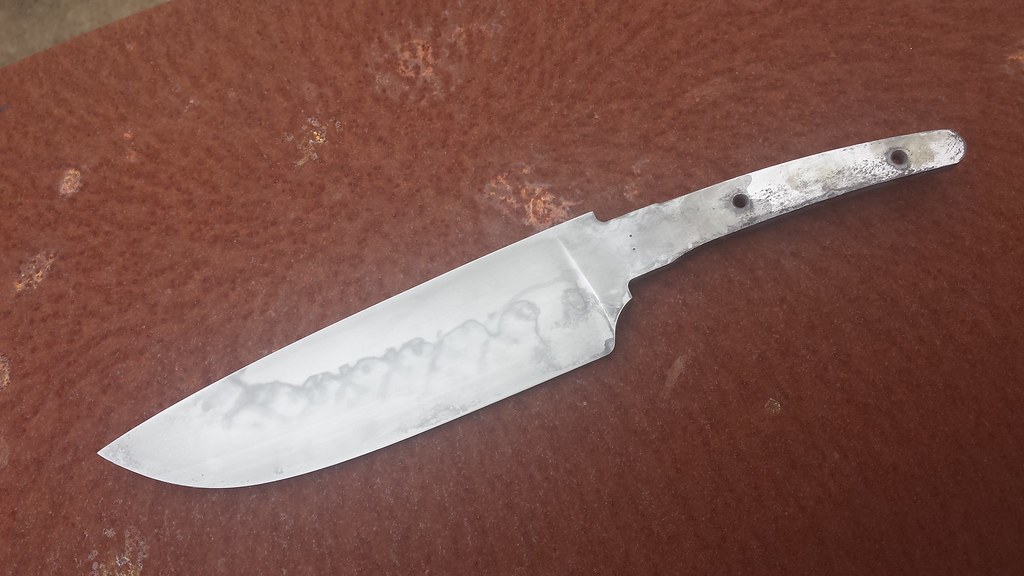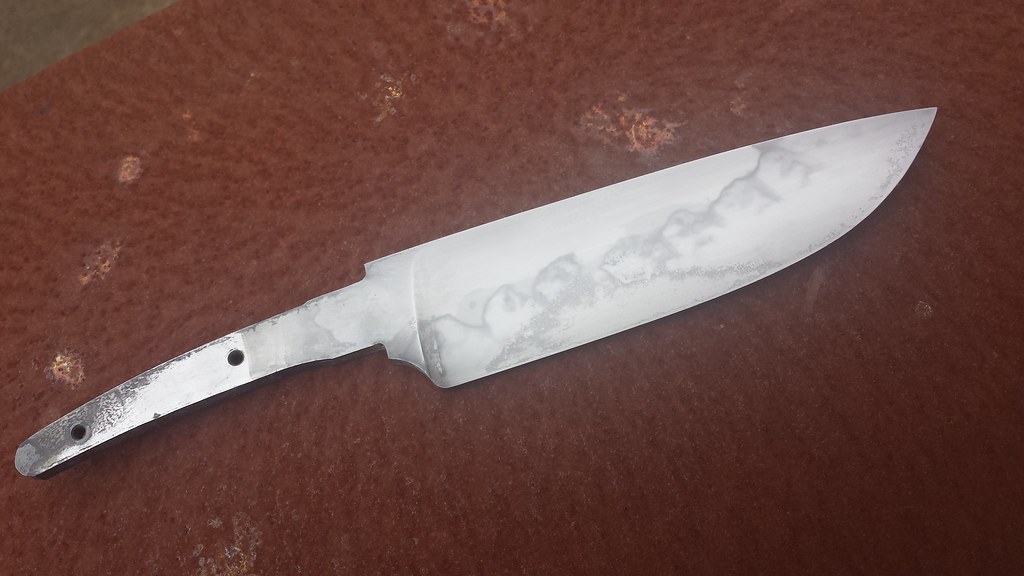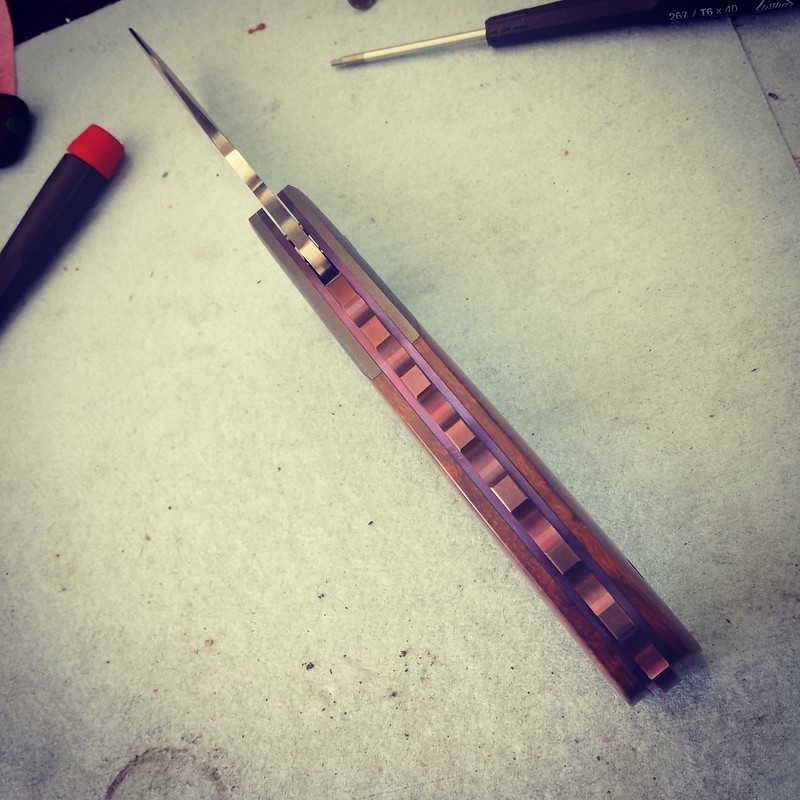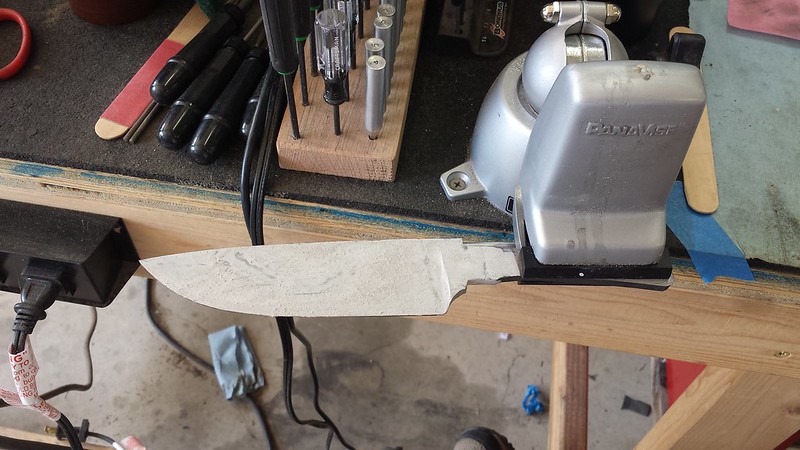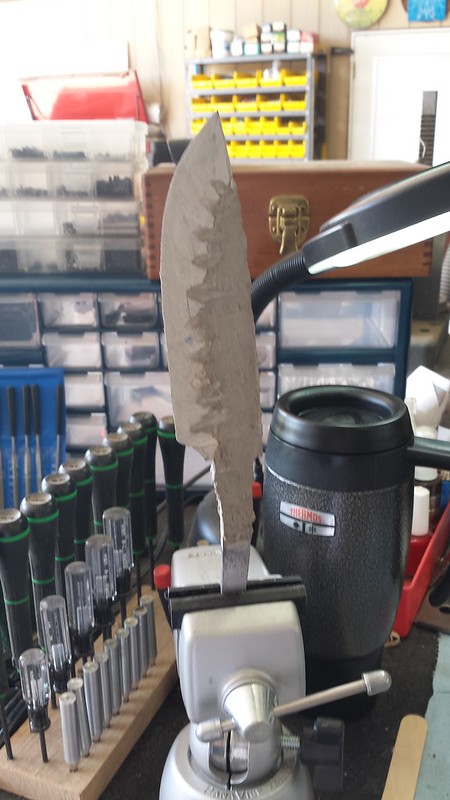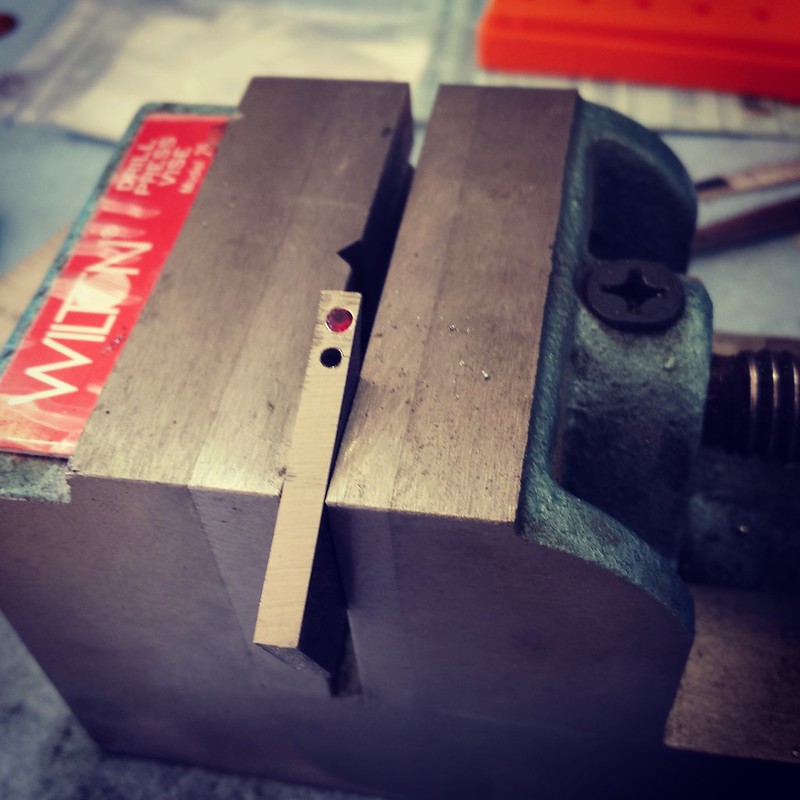Stacy E. Apelt - Bladesmith
ilmarinen - MODERATOR
Moderator
Knifemaker / Craftsman / Service Provider
- Joined
- Aug 20, 2004
- Messages
- 36,431
I'll give you my thoughts based on the photos:
First, a thin wash of clay over the entire blade helps. Make a cream thick slurry, cover the blade, and clamp in a vise horizontally (spine down-edge up) to dry.
Next, the spine clay looked a bit thick in the first photo. Too thick holds back too much heat,...which bleeds down into the edge and moves the hamon too far down. It should be about 1/16" thick to a max of 1/8" thick at the spine. The second photo looks better.
Last, lower temps work better for hamon formation. It reduces the drop time for the edge and also gives less reserve heat under the clay. A 10 minute soak should be more than ample.
First, a thin wash of clay over the entire blade helps. Make a cream thick slurry, cover the blade, and clamp in a vise horizontally (spine down-edge up) to dry.
Next, the spine clay looked a bit thick in the first photo. Too thick holds back too much heat,...which bleeds down into the edge and moves the hamon too far down. It should be about 1/16" thick to a max of 1/8" thick at the spine. The second photo looks better.
Last, lower temps work better for hamon formation. It reduces the drop time for the edge and also gives less reserve heat under the clay. A 10 minute soak should be more than ample.
Last edited:

